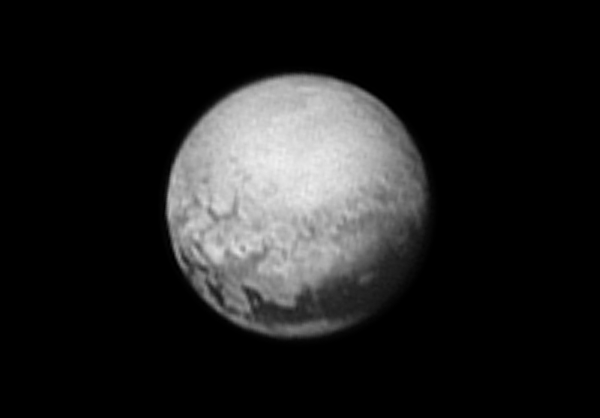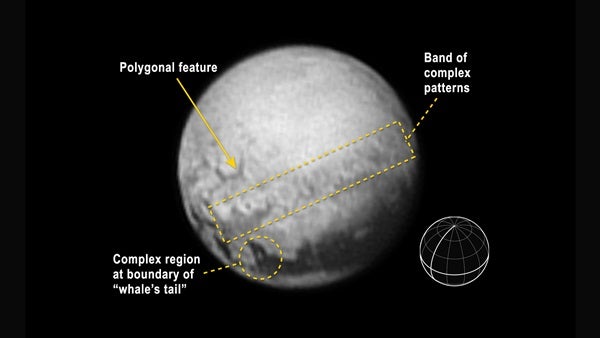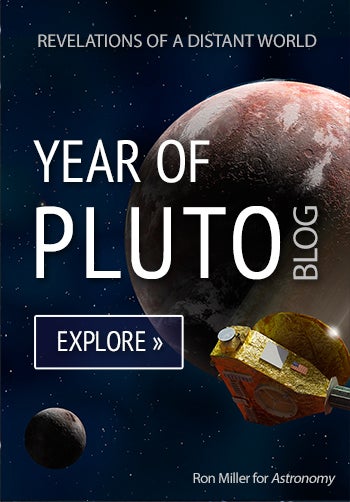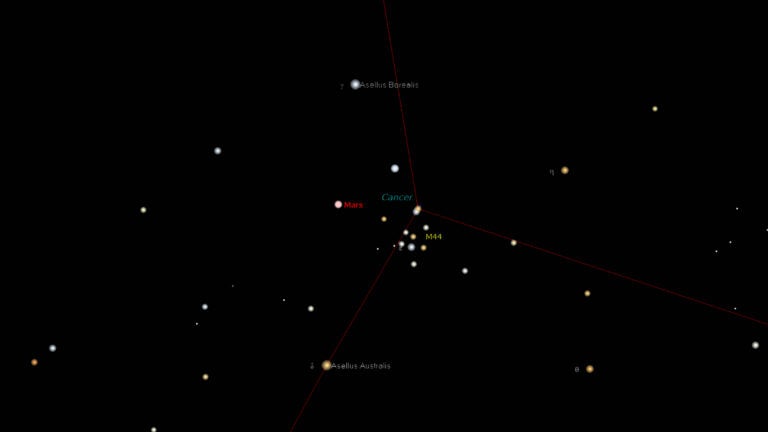It began as a point of light. Then, it evolved into a fuzzy orb. Now — in its latest portrait from NASA’s New Horizons spacecraft — Pluto is being revealed as an intriguing new world with distinct surface features, including an immense dark band known as the “whale.”
As the newest black and white image from New Horizons’ Long Range Reconnaissance Imager (LORRI) appeared on the morning of July 10, members of the science team reacted with joy and delight, seeing Pluto as never before. There will no doubt be many similar moments to come. New images and data are being gathered each day as New Horizons speeds closer to a July 14 flyby of Pluto, following a journey of 3 billion miles (5 billion kilometers).
“We’re close enough now that we’re just starting to see Pluto’s geology,” said New Horizons program scientist Curt Niebur, NASA Headquarters in Washington, D.C., who’s keenly interested in the gray area just above the whale’s “tail” feature. “It’s a unique transition region with a lot of dynamic processes interacting, which makes it of particular scientific interest.”
New Horizons’ latest image of Pluto was taken on July 9, 2015 from 3.3 million miles (5.4 million km) away, with a resolution of 17 miles (27km) per pixel. At this range, Pluto is beginning to reveal the first signs of discrete geologic features. This image views the side of Pluto that always faces its largest moon, Charon, and includes the so-called “tail” of the dark whale-shaped feature along its equator. (The immense, bright feature shaped like a heart had rotated from view when this image was captured.)
“Among the structures tentatively identified in this new image are what appear to be polygonal features; a complex band of terrain stretching east-northeast across the planet, approximately 1,000 miles long; and a complex region where bright terrains meet the dark terrains of the whale,” said New Horizons Principal Investigator Alan Stern. “After nine and a half years in flight, Pluto is well worth the wait.”
Regularly uploaded raw, unprocessed 100-millisecond images of the Pluto system from New Horizons’ LOng Range Reconnaissance Imager (LORRI).












